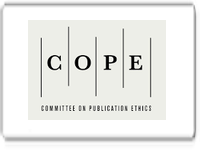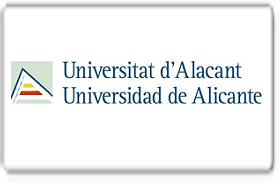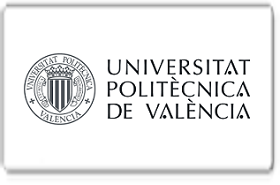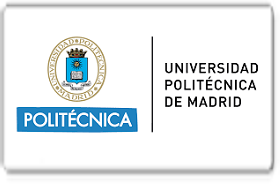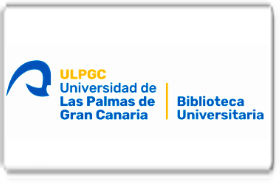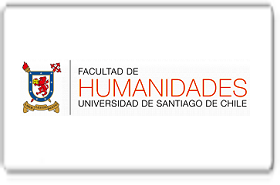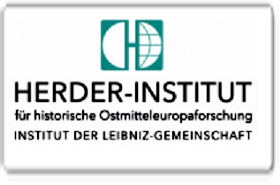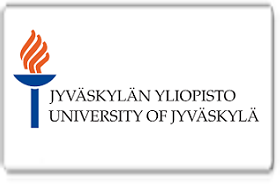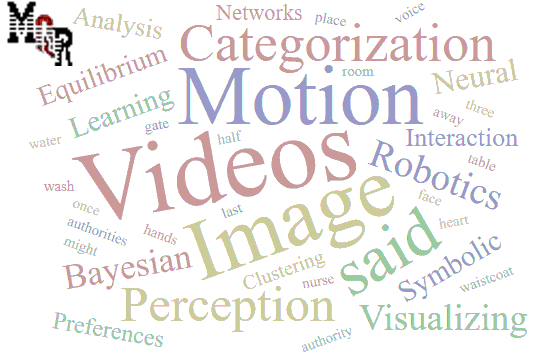Estudio integral de la prevalencia del Queratocono
DOI:
https://doi.org/10.56048/MQR20225.8.1.2024.3617-3634Palabras clave:
Queratocono; Topografía Corneal; Detección TempranaResumen
El estudio realizado en el Centro Oftalmológico Dr. Emigdio Navia en Portoviejo, Ecuador (2021-2023), tuvo como fin caracterizar el queratocono mediante topografía corneal, utilizando un enfoque cuantitativo y descriptivo. Analizando 187 pacientes, se clasificaron según estadíos de queratocono, edad y género. Se encontró una prevalencia mayor en menores de 20 años (40.64%) y en hombres (57.22%), destacando la detección en fases tempranas. Esto resalta la importancia de la detección precoz y la intervención temprana. Se subraya la necesidad de programas de detección temprana, especialmente en jóvenes, y de investigar los factores etiológicos del queratocono. Se recomienda el uso de tecnologías avanzadas para un diagnóstico preciso, crucial para prevenir la progresión a estados más severos.
Descargas
Métricas
Cited
DOI: 10.56048![]()
Citas
Crahay F, Debellemanière G, Tobalem S, Ghazal W, Moran S, Gatinel D. Quantitative interocular comparison of total corneal surface area and corneal diameter in patients with highly asymmetric keratoconus. Sci Rep. 2021;12.
Bolarín JM, Cavas F, Velázquez J, Alió J. A Machine-Learning Model Based on Morphogeometric Parameters for RETICS Disease Classification and GUI Development. Appl Sci. 2020;10(5):1874.
Zhang FJ, Song Y. [Thought of corneal collagen cross-linking combined with excimer laser ablation for irregular corneas in keratoconus]. [Zhonghua yan ke za zhi] Chin J Ophthalmol. 2021;57(4):251-253.
Averich V, Egorova GB. Ocular aberrations in keratoconus. Russ J Clin Ophthalmol. 2022.
Lavric A, Popa V. KeratoDetect: Keratoconus Detection Algorithm Using Convolutional Neural Networks. Comput Intell Neurosci. 2019.
Kankariya V, Dube AB, Grentzelos M, Kontadakis G, Diakonis V, Petrelli M, Kymionis G. Corneal cross-linking (CXL) combined with refractive surgery for the comprehensive management of keratoconus: CXL plus. Indian J Ophthalmol. 2020;68:2757-2772.
Sarac O, Yesilirmak N, Çağlayan M, Yaman D, Ozdas D, Toklu Y, Çağıl N. Dynamics of keratoconus progression after a previous successful accelerated crosslinking treatment during and after pregnancy. J Cataract Refract Surg. 2021;48:599-603.
Moshirfar M, Heiland MB, Rosen D, Ronquillo Y, Hoopes P. Keratoconus Screening in Elementary School Children. Ophthalmol Ther. 2019;8:367-371.
Lucas S, Burdon K. Genetic and Environmental Risk Factors for Keratoconus. Annu Rev Vis Sci. 2020.
Vastardis I, Sagri D, Fili S, Wölfelschneider P, Kohlhaas M. Current Trends in Modern Visual Intraocular Lens Enhancement Surgery in Stable Keratoconus: A Synopsis of Do’s, Don’ts and Pitfalls. Ophthalmol Ther. 2019;8:33-47.
McComish BJ, Sahebjada S, Bykhovskaya Y, Willoughby C, Richardson A, Tenen A, Charlesworth J, Macgregor S, Mitchell P, Lucas S, Mills R, Mackey D, Li X, Wang J, Jensen R, Rotter J, Taylor K, Hewitt A, Rabinowitz Y, Baird P, Craig J, Burdon K. Association of Genetic Variation With Keratoconus. JAMA Ophthalmol. 2019.
Dimacali V, Koronis S, Koukoula S, Rasoglou A, Adamopoulou A, Siskou E, Balidis M. Keratoconus and Cone-Rod Dystrophy among Brothers: Clinical Case Study and Genetic Analysis. Trends Ophthalmol Open Access J. 2019.
Anitha V, Vanathi M, Raghavan A, Rajaraman R, Ravindran M, Tandon R. Pediatric keratoconus - Current perspectives and clinical challenges. Indian J Ophthalmol. 2021;69:214-225.
Neuhann S, Schuh A, Krause D, Liegl RG, Schmelter V, Kreutzer T, Mayer W, Kohnen T, Priglinger S, Shajari M. Comparison of variables measured with a Scheimpflug device for evaluation of progression and detection of keratoconus. Sci Rep. 2020;10.
Hardcastle A, Lišková P, Bykhovskaya Y, McComish BJ, Davidson A, Inglehearn C, Li X, Choquet H… et al. A multi-ethnic genome-wide association study implicates collagen matrix integrity and cell differentiation pathways in keratoconus. Commun Biol. 2021;4.
Maleszka-Kurpiel M, Michalski A, Robak M, Warchoł W. Inter-eye asymmetry in manifest refraction, keratometry and pachymetry in eyes with keratoconus. Klinika oczna. 2020;122:112-116.
Maleszka-Kurpiel M, Michalski A, Robak M, Warchoł W. Influence of corneal cross-linking on visual acuity and topometric indices in keratoconus.
Eliasi E, Bez M, Megreli J, Avramovich E, Fischer N, Barak A, Levine H. The association between keratoconus and body-mass index: a population-based cross-sectional study among half a million adolescents. Am J Ophthalmol. 2020.
Aljohani S. A study to create a risk factor models to predict the development of keratoconus among the Saudi Arabian population. Eur Rev Med Pharmacol Sci. 2022;26(20):7344-7348.
Rabinowitz Y, Galvis V, Tello A, Rueda D, García JD. Genetics vs chronic corneal mechanical trauma in the etiology of keratoconus. Exp Eye Res. 2020.
Crawford AZ, Zhang J, Gokul A, McGhee C, Ormonde S. The Enigma of Environmental Factors in Keratoconus. Asia Pac J Ophthalmol. 2020.
Khawaja A, Rojas López KE, Hardcastle A, Hammond C, Lišková P, Davidson A, Gore D, Hafford Tear NJ, Pontikos N, Hayat S, Wareham N, Khaw K, Tuft S, Foster P, Hysi P. Genetic Variants Associated With Corneal Biomechanical Properties and Potentially Conferring Susceptibility to Keratoconus in a Genome-Wide Association Study. JAMA Ophthalmol. 2019.
D'Souza S, Nair A, Sahu GR, Vaidya T, Shetty R, Khamar P, Mullick R, Gupta S, Dickman M, Nuijts R, Mohan R, Ghosh A, Sethu S. Keratoconus patients exhibit a distinct ocular surface immune cell and inflammatory profile. Sci Rep. 2021;11.
Lucas S, Burdon K. Genetic and Environmental Risk Factors for Keratoconus. Annu Rev Vis Sci. 2020.
Jeng B, Belin M. New Consideration for Old Conditions. Asia Pac J Ophthalmol. 2020.
Hardcastle A, Lišková P, Bykhovskaya Y, McComish BJ, Davidson A, Inglehearn C, Li X, Choquet H, Habeeb M, Lucas S, Sahebjada S… et al. A multi-ethnic genome-wide association study implicates collagen matrix integrity and cell differentiation pathways in keratoconus. Commun Biol. 2021;4.
McKay T, Serjersen H, Hjortdal J, Zieske J, Karamichos D. Characterization of Tear Immunoglobulins in a Small-Cohort of Keratoconus Patients. Sci Rep. 2020;10.
Shetty R, DʼSouza S, Khamar P, Ghosh A, Nuijts R, Sethu S. Biochemical Markers and Alterations in Keratoconus. Asia Pac J Ophthalmol. 2020.
Almusawi LAM, Hamied FM. Risk Factors for Development of Keratoconus: A Matched Pair Case-Control Study. Clin Ophthalmol. 2021;15:3473-3479.
Vitar RLL, Bonelli F, Rama P, Ferrari G. Nutritional and Metabolic Imbalance in Keratoconus. Nutrients. 2022.
Khawaja A, Rojas López KE, Hardcastle A, Hammond C, Lišková P, Davidson A, et al. Genetic Variants Associated With Corneal Biomechanical Properties and Potentially Conferring Susceptibility to Keratoconus in a Genome-Wide Association Study. JAMA Ophthalmol. 2019.
Chen X, Zhao J, Iselin K, Borroni D, Romano D, Gokul A, et al. Keratoconus detection of changes using deep learning of colour-coded maps. BMJ Open Ophthalmol. 2021;6.
Bikbov M, Orenburkina OI, Babushkin A, Nuriev IF. Two-stage treatment of ametropia in patients with keratoconus and cataracts. Acta Biomed Scientifica. 2021.
Jansone-Langina Z, Mikelsone R, Gertnere J. Differences of corneal biomechanical parameters for keratoconus patients. 2022;12146:121460B - 121460B-8.
Mounir A, Awny I, Yousef H, Mostafa E. Distribution of corneal densitometry in different grades of keratoconus. Indian J Ophthalmol. 2023;71(3):830-836.
Franco J, White CA, Kruh J. Analysis of Compensatory Corneal Epithelial Thickness Changes in Keratoconus Using Corneal Tomography. Cornea. 2020.
Shanthi S, Nirmaladevi K, Pyingkodi M, Dharanesh K, Gowthaman T, Harsavardan B. Machine learning approach for detection of keratoconus. IOP Conf Ser: Mater Sci Eng. 2021.
Satani J, Gandhi S. A REVIEW: APPLICATIONS OF ARTIFICIAL INTELLIGENCE AND MACHINE LEARNING IN KERATOCONUS DETECTION. Towards Excellence. 2022.
Hamed AA, Fayek H, Abdrabbo M, Riad M. Comparison and correlation between anterior and posterior elevation maps in normal and keratoconus patients. 2021.
Malyugin B, Sakhnov S, Izmailova S, Boiko E, Pozdeyeva N, Axenova L, et al. Keratoconus Diagnostic and Treatment Algorithms Based on Machine-Learning Methods. Diagnostics. 2021;11.
Shao P, Eltony A, Seiler T, Tavakol B, Pineda R, Koller T, et al. Spatially-resolved Brillouin spectroscopy reveals biomechanical abnormalities in mild to advanced keratoconus in vivo. Sci Rep. 2019;9.
Publicado
Cómo citar
Número
Sección
Categorías
Licencia

Esta obra está bajo una licencia internacional Creative Commons Atribución 4.0.
Los autores se comprometen a respetar la información académica de otros autores, y a ceder los derechos de autor a la Revista MQRInvestigar, para que el artículo pueda ser editado, publicado y distribuido. El contenido de los artículos científicos y de las publicaciones que aparecen en la revista es responsabilidad exclusiva de sus autores. La distribución de los artículos publicados se realiza bajo una licencia 


















